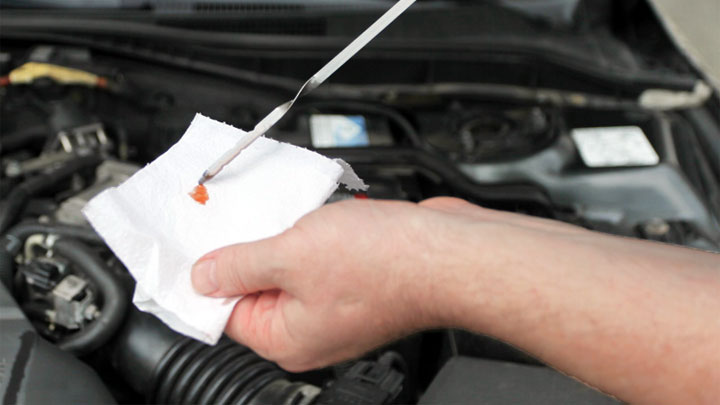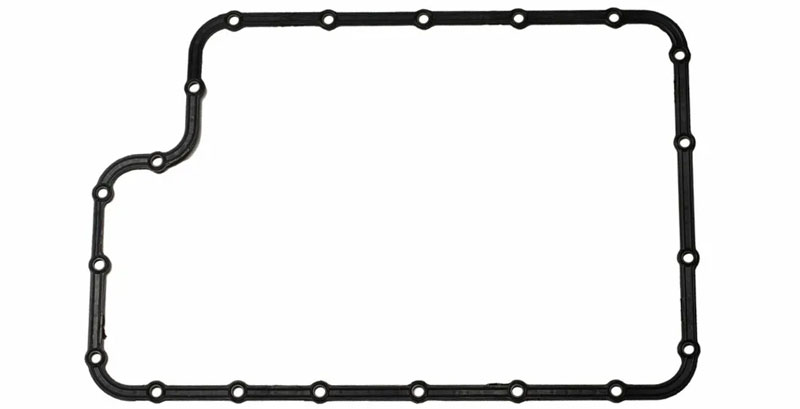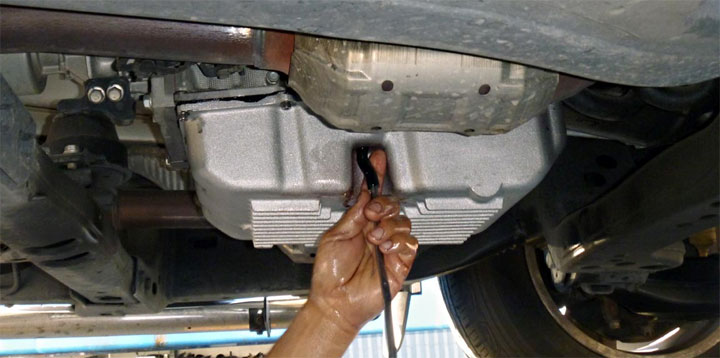6 Symptoms of a Transmission Pan Gasket Leak (and Replacement Cost)
Vehicles of every make/model are prone to occasional fluid leaks, especially as they begin to age. Of these potential leaks, those coming from a vehicle’s transmission pan gasket tend to be among the most prevalent and troublesome.
But this type of leak isn’t always obvious. Let’s look at the common symptoms of a transmission pan gasket leak, what caused it, and how much it’s going to cost to replace the gasket.

See Also: Symptoms of an Oil Pan Gasket Leak
What Is a Transmission Pan Gasket?
A transmission pan gasket is a specialty seal that is situated between a vehicle’s transmission pan and transmission housing.
The purpose of this gasket is to prevent the loss of transmission fluid that collects in the transmission pan, as is distributed throughout the transmission before ultimately being returned to the pan itself. In addition, this gasket prevents leakage from the sloshing of fluid contained within the transmission’s sump during normal operation.
Transmission pan gaskets are typically constructed of industrial grade rubber that is designed to withstand countless heating and cooling cycles. Alternatively, it is not uncommon to see some transmission pan gaskets in use that are of a hybrid construction, utilizing both rubber and cork-based composites.
In earlier days of automotive manufacturing, the use of straight-cork gaskets was common.

Signs of a Transmission Pan Gasket Leak
There are a handful of symptoms that often accompany transmission pan gasket leaks. Learning to recognize these symptoms can prove key in early detection, thereby streamlining diagnosis and repair.
#1 – Fluid Puddles
The puddling of fluid beneath a vehicle, especially where it is parked for prolonged periods, is one of the most common symptoms associated with a leaking transmission pan gasket (or any leak for that matter).
The more severe the leak, the greater the accumulation of transmission fluid will be. While the type of fluid that’s leaking will most often be associated with the part directly above, that is not always the case depending on where various underbody panels are positioned or if parked on a sloped surface.
#2 – Falling Transmission Fluid Levels

A continuous and progressive reduction in the fluid visible on a vehicle’s transmission fluid dipstick can also serve as another potential symptom of transmission pan gasket failure.
This would signify a transmission fluid leak of noteworthy severity, which would thereby warrant further investigation.
#3 – Burnt Chemical Smell
It is not uncommon to notice a burnt chemical smell coming from the vicinity of a vehicle’s transmission when fluid levels begin to get low. This comes as the result of internal overheating that occurs when fluid levels are below a safe operating threshold. This loss of fluid should be investigated ASAP.
#4 – Erratic Shifting

A transmission that is low on fluid will often exhibit symptoms related to erratic shifting, or abnormally hard shifts. This can be quite concerning, for good reason.
A transmission operated without sufficient transmission fluid can sustain significant internal damage, in short order. The integrity of the affected vehicle’s transmission pan gasket should be validated in an attempt to isolate the issue at hand.
#5 – Irregular Noises During Shifting
A transmission that is low on fluid can also begin exhibiting odd or concerning noises when shifting. These noises can vary in type and intensity, ranging from grinding to harmonic whining.
At times, these noises can even appear to come and go, depending upon operating conditions. Any time such noises are heard, a check of the affected transmission’s fluid level should be conducted.
#6 – Noticeable Slipping
If your vehicle hesitates when accelerating from a stop, though engine RPM rises as anticipated, there is a decent chance that your vehicle’s transmission is slipping. This often comes as the result of diminished transmission fluid levels, which typically occur as the byproduct of a noteworthy leak.
Because of the propensity for transmission pan gaskets to leak with time and age, a thorough inspection of this assembly should be a priority under these circumstances.
What Causes the Gasket to Leak?

The number one cause of transmission pan gasket leakage is normal wear/tear.
With age, a transmission pan gasket can actually shrink ever-so-slightly, leading to fluid loss. In other cases, this gasket might become brittle with age, in turn leading to the development of fine cracks. The fluid then begins seeping through these cracks during normal vehicle operation.
It is also not uncommon for a transmission pan gasket to begin leaking as a result of underbody impact. This occurs most commonly when a motorist inadvertently strikes sizable debris in the road or runs their vehicle over a curb.
Though this impact might not compromise the pan itself, it can still distort its gasket as irregular forces are imparted.
Diagnosis
In most cases, a failed transmission pan gasket is pinpointed through thorough visual inspection. A technician will carefully study where transmission fluid-related dampness begins and ends. These efforts will prevent a possible misdiagnosis that could prove costly, in terms of unnecessary repairs.
In some cases, degreasing of a vehicle’s engine and transmission might be necessary before a final determination can be made.
In the most difficult cases, specialized UV dye might be added to a vehicle’s transmission fluid, to allow easier identification of the leak in question. Under such circumstances, a technician assesses a leak’s origins, by seeking out the presence of dye-stained fluid at one particular location.
Transmission Pan Gasket Replacement Cost
Best places to order parts? See: 19 Best Online Auto Parts Stores

You can expect to pay between $250-$450 to have your vehicle’s transmission pan gasket replaced. Of this cost, approximately $100-$150 can be attributed to parts/materials (gasket, fluid, etc.).
Meanwhile, labor costs relating to this repair will generally tally $150-$300. Knowing this, you can save significantly by conducting this repair on your own.
Replacement Procedure

The matter of replacing a vehicle’s transmission pan gasket is relatively straightforward. In fact, this repair can often be completed with a high degree of success by DIY mechanics.
The following is a generalized outline for the replacement of a failed transmission pan gasket. But it’s always recommended to consult a service manual for your specific vehicle for the exact replacement process.
- Drain Transmission Fluid – Begin by draining all fluid from a vehicle’s transmission pan/sump. A drain plug is generally present on the transmission pan itself. Be sure to properly dispose of the fluid according to local laws
- Remove External Transmission Pan Bolts – Next, you will begin removing all external transmission pan bolts that are present around the pan’s outer flange. Retain all bolts that are removed.
- Discard Old Gasket – At this point, you will remove and discard the transmission pan’s old gasket. In some cases, it will be necessary to scrape remnants of this gasket off of the transmission pan flange and/or transmission housing mating surface. It is very important to make sure that both surfaces are thoroughly cleaned before proceeding.
- Apply New Gasket – You will now apply the new gasket to the up-facing face of the transmission pan. It can prove helpful to lightly stick this gasket in place with the use of shellac or other similar products.
- Reinstall Pan – Next, raise the transmission pan into place, being careful to avoid disturbing the placement of the new gasket. Start all previously removed bolts by hand, before torquing as specified by the vehicle’s manufacturer.
- Refill Transmission – It will now be necessary to refill your vehicle’s transmission with the appropriate fluid. This should be done in strict accordance with all service instructions provided by your vehicle’s manufacturer, in relation to such procedures.
Related: Transmission Fluid Flush vs Change (What’s the Difference?)
- 4 Causes of Smoke Coming Out of Your Car Vents - Jun 20, 2024
- 6 Reasons Why Your Car Won’t Start After Getting Gas - Jun 17, 2024
- P2196 Code (Symptoms, Causes, and How to Fix) - Jun 13, 2024
